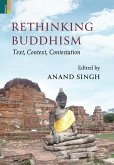Early Indian Religion and Society examines the gradual disappearance of sacrificial liturgy in South Asia in the first millennium BCE, prompting priestly brahmaṇas to look towards subaltern rituals and clients, particularly sudras. The growth of urbanization intensified social tensions as well as dissent against sectarian authorities, ultimately leading to the break-up of all major religious sects. As a result, the ideology of total devotion (Bhakti) to a supreme personal lord-lauded in the Ramayana, the Mahabharata and the Bhagavad Gita-spread across the subcontinent. The Bhakti movement and the increasingly restrictive caste system prompted lower castes to aspire to a higher social status. The volume then moves into exploring how temple-centric cults became the norm in the first millennium CE. During this period, the overarching influence of tantric cults engulfed most major religious sects, encouraging the proliferation of black magic and superstition.








